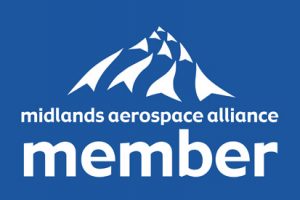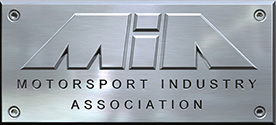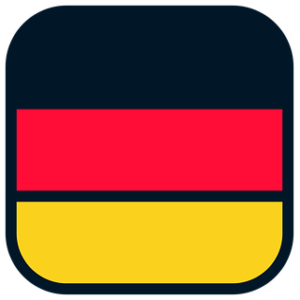Alloy Product Degreasing Methods In Heat Treatment
In the world of metallurgy, precision is key. Whether you’re preparing alloy products for thermal processing, painting, plating, or welding, one crucial step cannot be overlooked: alloy product degreasing. This often-underestimated process plays a vital role in ensuring the integrity of alloy products, safeguarding metallurgical properties, enhancing adhesion, and optimising overall process performance.
Alloy product degreasing is the meticulous art of removing oils, greases, and various contaminants from metal surfaces. In this blog, we’ll delve into the significance of alloy product degreasing, the methods used, and the primary focus of our expertise: Vapour Solvent Degreasing.
What Is Degreasing?
Alloy product degreasing, in essence, is the gateway to impeccable metallurgy. It is a pre-treatment step designed to cleanse metal surfaces of impurities and contaminants. This meticulous process prepares metal products for subsequent procedures, such as heat treatment and bonding, by ensuring metal surfaces are free from unwanted contaminants, which could compromise the final product’s integrity.
To prevent alloy products from being exposed to environmental elements during inter-stage processes, metal surfaces are protected with corrosion preventative substances such as oil, grease and wax. It is imperative that such corrosion protection substances are removed just prior to thermal processes, whose presence will otherwise have far-reaching consequences i.e., will adversely affect metallurgical properties, adhesion, and process performance.
Methods for Degreasing Metal Surfaces
In the world of alloy product degreasing, several methods are employed to achieve the coveted pristine state for metal surfaces. These methods can be broadly categorised into Solvent Degreasing, Aqueous Degreasing, and ultrasonic cleaning. Each method has it’s unique advantages and is tailored to specific applications. Let’s break down each one:
1. Solvent Degreasing
Solvents are substances capable of dissolving protective oils and other organic substances.
Immersion Solvent Degreasing is a manual or semi-automated process where alloy products are washed and/or sprayed with solvent to remove heavy surface oils and grease. After washing, metal surfaces are usually wiped clean, using cotton -type cloths.
Vapour Solvent Degreasing, our bread and butter, is the method that has stood the test of time and remains the cornerstone of our expertise at AHT. It requires sophisticated, hermetically sealed plant to prevent solvent vapour loss to atmosphere, but is regarded as the most effective and versatile approach for removing contaminants from metal surfaces. Vapour Solvent Degreasing, leaves alloy products clean, dry, and ready for immediate subsequent processing.
One of the key benefit’s of Vapour Solvent Degreasing is it’s ability to target a wide range of contaminants without causing any detriment to alloy products, whilst leaving metal surfaces dry and residue free. This makes Vapour Solvent Degreasing suitable for a variety of industries and applications, from aerospace to automotive, and from medical devices to electronics.
Our process ensures a thorough and residue-free degreasing service, meeting the strictest quality standards in the industry.
2. Aqueous Degreasing
Aqueous Degreasing is another effective method for alloy product degreasing. It involves the combined use of hot water and detergents or surfactants, to remove contaminants from metal surfaces, both mechanically and chemically. The heat helps to break down the oils and greases, the additives dissolve the oils, and the washing action scrubs oils and greases from metal surfaces.
This method is particularly useful for removing heavy contaminants or when the use of solvents is not preferred due to environmental concerns. Aqueous Cleaning systems involve dissolving of soluble additives, such as detergents emulsifiers, alkalis and anti-foaming agents into water, which is then heated to assist with degreasing. Aqueous Degreasing is commonly employed in industries where use of VOC type solvents are not permitted, or where cleanliness standards are less stringent, but nevertheless, remains a valuable tool for specific applications.
3. Ultrasonic Cleaning
Ultrasonic cleaning is often paired with Aqueous Degreasing to assist with scrubbing matter from metal surfaces, which involves the use of ultrasonic waves to create millions of tiny bubbles within the cleaning solution. These bubbles, through a process called cavitation, release energy that dislodges contaminants from the metal’s surface.
Ultrasonic cleaning is exceptionally effective for intricate alloy products with complex geometries or hard-to-reach areas. Ultrasonic cleaning offers the advantage of consistency and repeatability, resulting in a preferred choice for industries where precision is paramount.
Solvent Degreasing Vs. Aqueous Degreasing
Alloy product degreasing is an essential step in the journey of alloy products from raw material to finished product. Proper degreasing not only ensures the integrity of the final product but also contributes to the efficiency and performance of subsequent processes, such as heat treatment. Each method has it’s strengths and applications, and choosing the right one depends on the specific needs and constraints of your industry.
Aqueous Degreasing systems are regarded as a more environmentally friendly option over solvent cleansers, as aqueous solutions are non-flammable and do not release VOCs (Volatile Organic Compounds) into the atmosphere. However, there is a strong case for solvent degreasing due to their superior degreasing effectiveness and drying capability.
Contact Us For A Free Degreasing Quote
At Alloy product Heat Treatment, we have a rich history of providing top-notch Solvent Degreasing services. When precision and quality are your priorities, trust in our experience to deliver exceptional results for your metallurgical needs. Our commitment to excellence and sustainability sets us apart, making us your ideal partner in alloy product degreasing and beyond. You can get your free quote here via contact form, email, or phone call.








